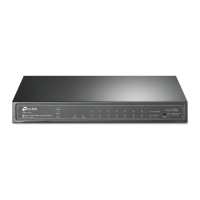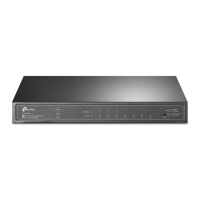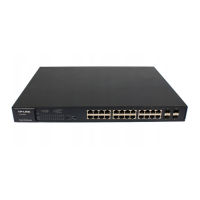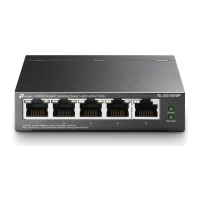based on the
port number you entered.
Port: Displays local device's port number.
Transmit Total: Displays the number of LLDPDUs sent by this port.
Receive Total: Displays the number of LLDPDUs received by this port.
Discards: Displays the number of LLDPDUs discarded by this port.
Errors: Displays the number of error LLDPDUs received by this port.
Ageouts: Displays the number of overtime neighbors linking to this port.
TLV Discards: Displays the number of TLVs dropped by this port.
TLV Unknowns: Displays the number of unknown TLVs received by this port.
13.4 LLDP-MED
LLDP-MED is an extension of LLDP intended for managing endpoint devices such as Voice over
IP phones and network switches. The LLDP-MED TLVs advertise information such as network
policy, power via MDI, inventory management, and device location details.
Elements
LLDP-MED Device: Refers to any device which implements this Standard.
LLDP-MED Device Type: LLDP-MED devices are comprised of two primary device types:
Network Connectivity Devices and Endpoint Devices.
Network Connectivity Device: Refers to an LLDP-MED Device that provides access to the IEEE
802 based LAN infrastructure for LLDP-MED Endpoint Devices. Bridge is a Network Connectivity
Device.
Endpoint Device: Refers to an LLDP-MED Device at the network edge, providing some aspects
of IP communications service, based on IEEE 802 LAN technology. Endpoint Devices may be a
member of any of the Endpoint Device Classes. Endpoint Devices are composed of three defined
Classes: Class I, Class II and Class III.
Generic Endpoint Device (Class I): The most basic class of Endpoint Device.
Media Endpoint Device (Class II): The class of Endpoint Device that supports media stream
capabilities.
Communication Device Endpoint (Class III): The class of Endpoint Device that directly supports
end users of the IP communication system.
Network Policy TLV
The Network Policy TLV allows both Network Connectivity
Devices and Endpoints to advertise VLAN configuration and
associated Layer 2 and Layer 3 attributes that apply for a set
of specific applications on that port.
Location Identification TLV
The Location Identification TLV provides for advertisement of
location identifier information to Communication Endpoint
Devices, based on configuration of the Network Connectivity
Device it's connected to. You can set the Location
Identification content in Location Identification Parameters. If
Location Identification TLV is included and Location
Identification Parameters isn't set, a default value is used in
Location Identification TLV.
154
